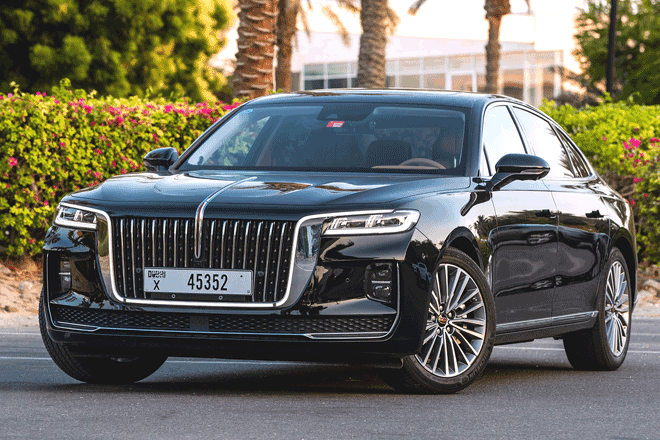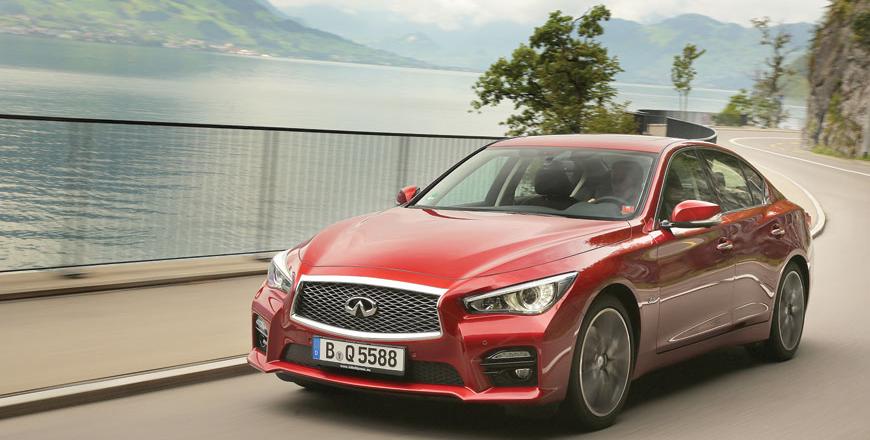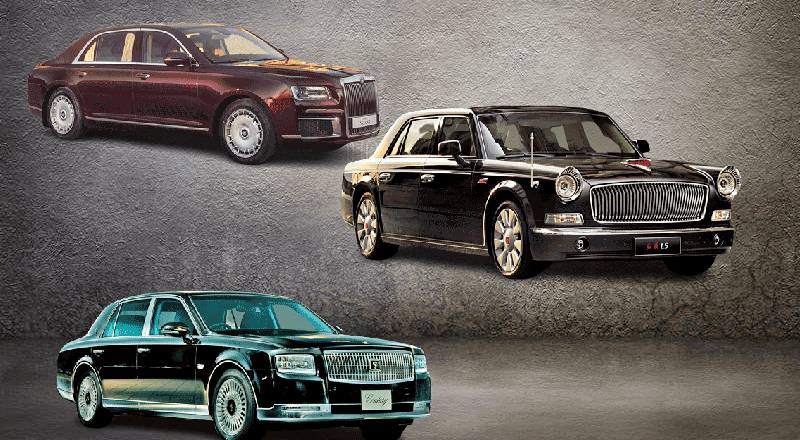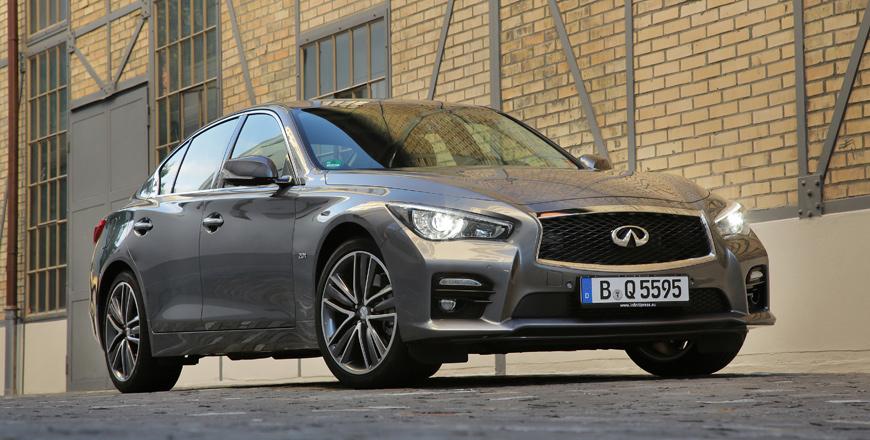You are here
Hongqi H9 2.0T: High-class newcomer
By Ghaith Madadha - Feb 20,2023 - Last updated at Feb 20,2023

Photo courtesy of Hongqi
Traditionally best known for its line of large state cars dating back to 1958 and their contemporary retro-futuristic Rolls Royce-rivalling ultra luxury Hongqi L5 successor circa 2014, the Chinese manufacturer has also dabbled in the executive segment with rebranded, locally produced variants of the third and fourth generation Audi 100 in the past.
It is, however, only in very recent years that the automotive FAW Group’s luxury Hongqi brand has become a more commercially minded endeavour with a wider and more modern fleet of vehicles and new export markets.
Expanding at an exponential rate in terms of sales numbers since 2018, the Hongqi brand first began arriving in Gulf markets in the same year, and opened for business in Jordan late last year, with the H9 as its regional flagship saloon. Launched in 2020 and pitched as a luxury car, the elegantly imposing and sumptuously appointed Hongqi H9 however and perhaps more accurately slots in as analogous to something between a long wheelbase Mercedes-Benz E-Class executive car and standard wheelbase S-Class full-size luxury car, in terms of proportions, appointment and model segment.
Eastern elegance
Distinctively Chinese in character, the H9 however carries certain American flavours, as did Hongqi’s state cars of yesteryear. Most reminiscent of modern Cadillac saloons in its general design, style and lines, the H9 also features a Maybach-like sensibility at its rear lights. That said, the H9 also has hints of a perhaps nautical inspiration, with a grand and statuesque Rolls Rolls-like upright fascia and long bonnet giving way to a slinkier and tapered rear, across a gently arcing roofline and elegantly descending side creases.
Positioned behind its vast vertically slatted grille, prominently browed slim headlights and emblem representing the red flag, the Hongqi H9 is powered by a choice of turbocharged mild hybrid 2-litre four-cylinder or supercharged 3-litre V6 engine options, driving the rear wheels through a 7-speed automated dual clutch gearbox. Driven on Jordanian roads in former guise, the H9 2.0T produces 248BHP at 5,800rpm and abundant 280lb/ft torque throughout a broad and accessible 1,800-4,000rpm mid-range, while a 48V starter/generator hybrid system primarily powers ancillaries and improves efficiency.
Eager and efficient
Spooling up swiftly and with little of the low-end pre-boost lag typical to most turbocharged engine, the Hongqi H9 2.0T launches eagerly, carrying its 1,875kg heft through the 0-100km/h acceleration benchmark in 7.8-seconds and onto a potential 230km/h top speed. A confident and refined cruiser with muscular mid-range pull whether overtaking or storming steep inclines, the H9 is nevertheless eager to rev right to its redline, with a distant and well-subdued, yet still evocative snarl. Driven more sympathetically, the H9 meanwhile returns low 7.1l/100km combined fuel consumption.
A keen handling saloon with its balanced and classic front engine and rear drive weighting, double wishbone front and integral-link rear suspension, and predictable dynamics, the H9 2.0T proved unexpectedly tidy and direct on turn-in, despite its considerable weight and length. Eager through sprawling switchbacks, the H9 is easy to place on road and rewarding as it makes brisk progress. However, its diligently effective electronic stability controls remain fully active when driven in Sport mode, erring on the side of caution in cutting power at even a whiff of a rear grip loss.
Smooth
and sophisticated
If prevented from better exploring the H9’s impressive dynamic envelope when using Sport mode (with its more responsive and aggressive gearbox shift pattern), one found that counter intuitively electing Snow driving mode loosened up stability controls for a more fluent experience through winding roads — even at the expense of slower shift times and reduced throttle response — and allowed for more leeway to tighten and adjust cornering lines. That said, more control over stability control functionality in different modes could be an easy enough update for the H9.
With light, quick and direct steering, progressive weight transfer to the rear, and good body control through corners, the H9 is a sportier and more engaging drive than expected. On highway meanwhile, it is a refined, stable and a settled high-speed luxury express. In terms of ride quality, the H9 processes most bumps and textural imperfections in its stride, with a smooth yet forgivingly comfortable confidence. That said, it rides somewhat firm over some more jagged and sudden potholes and bumps, as equipped with 245/40R20 tyres.
Stylish and spacious
With that in mind, the H9 might be better served with smaller entry-level specification 18-inch alloy wheels, fitted with more compliant 235/50R18 tyres for local roads. Settled and well controlled in vertical movements for most occasions, the H9 might also benefit from slightly firmer dampers over sudden road dips, and to keep tyres more firmly pressed into the tarmac over deep cracks and high frequency ripples in road surfaces. Nevertheless, and regardless of any possibilities for further fine-tuning, the H9 provides otherwise excellent overall comfort.
Luxuriously appointed and inviting, the H9’s stylish, sophisticated and user-friendly cabin incorporates quality leathers, surfaces and trim, including brushed aluminium accents. Extensively well-equipped with convenience, safety, driver assistance and infotainment features including pop-out door handles, four zone climate control and adjustable, ventilated and massaging front and rear seats, the H9 provides a supportive and comfortable driving position and good boot space. Rear passengers meanwhile benefit from easy access, generous legroom and above average headroom, even with a panoramic roof. Meanwhile, the V6 model feature two-tone paint and twin individual rear seat options.
TECHNICAL SPECIFICATIONS
Engine: 2-litre, turbocharged, in-line 4-cylinders
Valve-train: 16-valve, DOHC, variable timing, direct injection
Gearbox: 7-speed automated dual clutch, rear-wheel-drive
Mild hybrid system: 48V starter/alternator
Power, BHP (PS) [kW]: 248 (252) [185] @5,500rpm
Specific power: 124.7BHP/litre
Power-to-weight: 132.2BHP/tonne
Torque, lb/ft (Nm): 280 (380) @1,800-4,000rpm
Specific torque: 191Nm/litre
Torque-to-weight: 202.6Nm/tonne
0-100km/h: 7.8-seconds
Top speed: 230km/h
Fuel economy, combined: 7.1-litres/100km
Fuel capacity: 62-litres
Length: 5,137mm
Width: 1,905mm
Height: 1,493mm
Wheelbase: 3,060mm
Ground clearance: 110mm
Boot capacity: 380-litres (estimate)
Kerb weight: 1,875kg
Suspension: Double wishbone/integral-link
Steering: Electric-assisted rack & pinion
Turning circle: 12.27-metres (estimate)
Brakes: Ventilated discs
Tyres: 245/40R20
Price, on-the-road: Starting from JD85,000 (with comprehensive insurance)
Warranty: 7-years
Related Articles
The first car bearing Infiniti’s new “Q”-based nomenclature, the Q50 first launched in 2013 as the world’s first car with advanced steer-by-
With German and British leaders spoilt for choice for official state cars, Italians often opting for the sporty Maserati Quatroporte and the
First launched in 2013 with the featured entry-level 2.0t model arriving the following year, the Infiniti Q50 is the Honk Kong-based Japanes

















